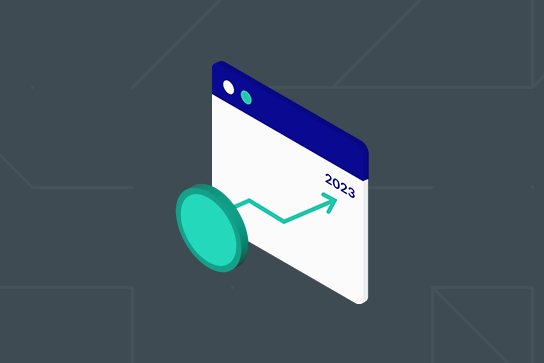
Central Bank Digital Currencies (CBDCs) Explained
Central bank digital currencies (CBDCs) are a hybrid of traditional and digital currencies. As they are fiat currencies digitalised, users can experience the convenience of digital assets - for example, immediate transactions - without the potential volatility often seen in cryptocurrencies.
Many governments favour introducing centralised currencies to ensure their foot in the crypto ecosystem and as a way to bring digital currency to the mass public while ensuring digital currency sovereignty. Currently, more than 80 countries have considered forming a CBDC. Launched in 2020, Bahama’s Sand Dollar is a successful example of a CBDC. It is a digital version of the Bahaman dollar and is issued by the Central Bank of the Bahamas. The Sand Dollar provides users greater flexibility when participating in financial services via the Sand Dollar app and meets the government’s objectives of retaining currency sovereignty.
Below we will dive into some of the basics of CBDCs: how they differ from stablecoins and cryptocurrency, how they work, the differences between account-based and token-based CBDCs, their regulations, the pros and cons they offer, and what the future holds.
Is a CBDC a Stablecoin?
CBDCs are not stablecoins. Firstly CBDCs are not pegged to a currency; they are the currency of the issuing government, whereas stablecoins are pegged to an underlying asset which can be fiat, precious metals or commodities or a combination of these. Moreover, stablecoins are usually governed by private companies like Binance.
Is a CBDC a Cryptocurrency?
CBDCs differ from cryptocurrencies in a variety of ways. For starters, as they are backed by the government, therefore are centralised and may function on permissioned (private) blockchains. True cryptocurrencies, on the other hand, are completely decentralised and often, while legal, are not recognised as legal tender in the issuing country. To date, only the Central African Republic and El Salvador recognise crypto as a legal tender currency. Additionally, because cryptocurrencies employ permissionless (public) blockchains, anybody can participate in the blockchain’s operations, unlike CBDCs.
Cryptocurrency allows users to transact pseudonymously; as the central bank controls CBDC networks, all transactions are seen and recorded by the bank and tax regulatory services, meaning less privacy.
In summary, CBDCs offer users the ease of digital assets with the regulatory constraints of fiat.
How Does a CBDC Work?
CBDCs function similarly to traditional forms of fiat, except being digital. Users access their assets through a digital wallet, usually an app on their cellphones, and transact as they would through a traditional banking app. Users can check balances, transfer funds, pay for goods and services and so forth.
However, CBDCs differ from traditional forms of fiat because payments can be made in a digital manner, allowing for potentially instant settlement. So, instead of waiting a period for payments, users can now access funds almost instantly. Currently, governments are looking at fiat initiatives that offer this sort of immediate payment with no transaction costs (in fiat). Examples include Brazil’s active Pix initiative and the FedNow proposal in the United States.
For a CBDC to function, the Central Bank creates the CBDC and issues it to users either directly or through authorised intermediaries. Users receive the CBDCs in their digital wallets and use them for transactions as they would with traditional fiat. Thereafter, the central bank verifies each transaction to ensure that the CBDC being spent is authentic and has not been spent before. Users can redeem their CBDCs for physical currency or other assets if they choose to do so.
What’s the Difference Between Account-based and Token-based CBDCs?
The key difference between these approaches is how transactions are recorded and managed. In an account-based CBDC system, transactions are recorded on a centralised ledger, while in a token-based CBDC system, transactions are recorded on a decentralised ledger.
There are advantages and disadvantages to each approach. Account-based CBDCs offer more centralised control, which can provide greater security and easier monitoring of transactions, but can also raise concerns about privacy and surveillance. Token-based CBDCs offer more decentralisation, which can provide greater privacy and anonymity but can be more challenging to monitor and regulate.
With an account-based CBDC, an intermediary confirms the account holder's identity, as opposed to a token-based CBDC, where the recipient of the token will confirm ownership.
Ultimately, the choice between these two approaches will depend on the specific goals and priorities of the central bank and the country in which the CBDC is being implemented.
Are CBDCs Regulated?
CBDCs fall under the central bank of the issuing government’s authority and are regulated as fiat. Therefore, banks must ensure the relevant AML/CFT standards are met.
Although CBDCs are not classified as virtual assets as per the Financial Action Task Force’s (FATF) Updated Guidance for a Risk-Based Approach to Virtual Assets and Virtual Asset Service Providers, they still fall under the scrutiny of the FATF:
“This Guidance also does not address central bank-issued digital currencies. For FATF’s purposes, these are not VAs as they are digital representation of fiat currencies. The FATF Standards however apply to central bank digital currencies similar to any other form of fiat currency issued by a central bank. Central bank digital currencies may have unique ML/TF risks compared with physical fiat currency, depending on their design. Such ML/TF risks should be addressed in a forward-looking manner before the launch of any CBDCs. However, their noninclusion in this Guidance does not indicate the FATF considers them unimportant. Rather, it is a product of the fact that they are categorized as fiat currency, rather than the VAs that this Guidance addresses.” [Page 10; paragraph 17. ]
Additionally, in the event of a wire transfer between regulated entities or between a regulated entity and a CBDC user, the required originator and beneficiary information is to be provided per Recommendation 16 of the FATF.
What Are the Pros and Cons of CBDCs?
CBDCs carry many positives, including
Potentially increasing financial inclusion by providing access to banking services for the unbanked or underbanked. This is because they can be accessed using a mobile phone or other digital devices.
Offering faster and cheaper payment options with lower transaction costs and greater security than traditional payment methods.
Helping central banks better implement monetary policy by providing more direct control over the money supply and enabling the implementation of negative interest rates.
Helping reduce counterfeiting and illicit activities by providing a more secure and traceable payment method due to blockchain technology.
Conversely, the cons include
Like any digital system, CBDCs are vulnerable to cyber attacks, which could potentially compromise the security and stability of the financial system.
Requiring users to disclose their financial information, which could be misused or leaked. Furthermore, because the central bank controls them, there is decreased privacy for users and increased transaction traceability.
CBDCs could lead to the exclusion of banks in transactions as well as other financial institutions, which could impact financial stability and employment in the financial sector.
Developing and implementing a CBDC system would require significant investment in technology and infrastructure, which could be costly.
What's Next?
CBDCs are designed to be a secure, efficient, and cost-effective way to transact with digital fiat currency. They are an emerging technology that has the potential to revolutionise the way we use money. However, many questions and challenges still need to be addressed by the ecosystem before widespread adoption can occur.


